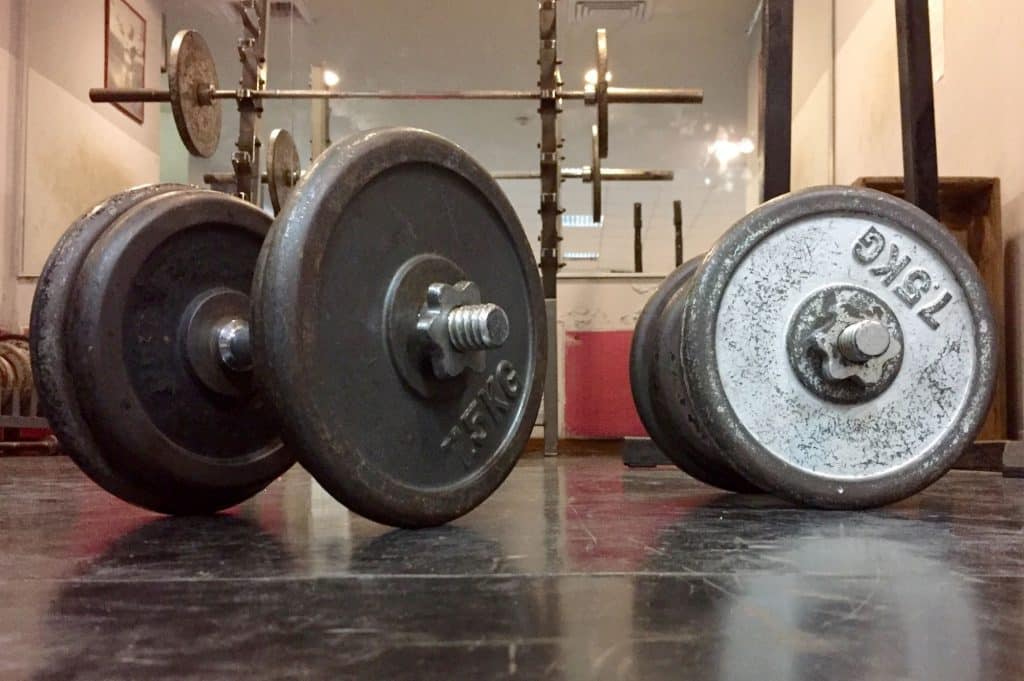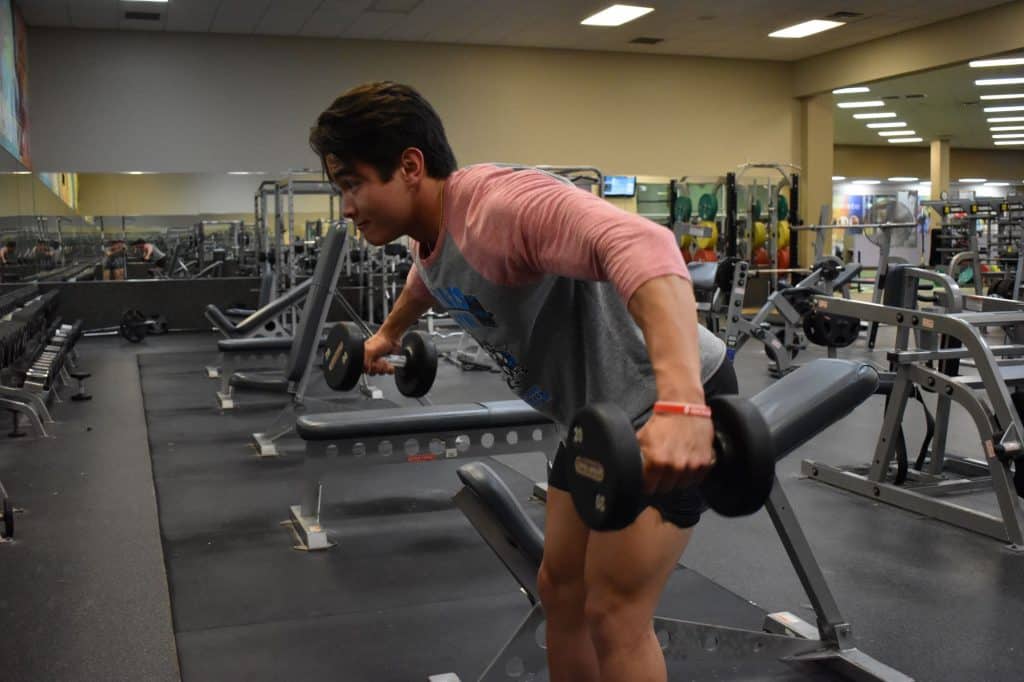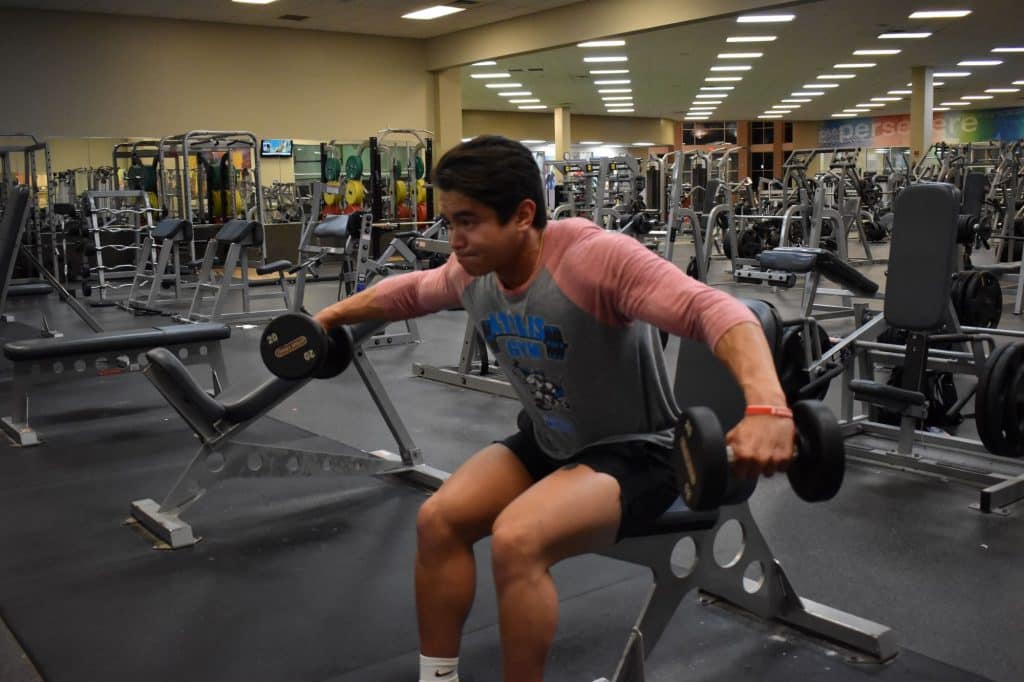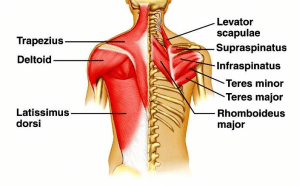Blow up Your Shoulders With the Dumbbell Rear Delt Fly
With Halloween right around the corner, you want to have your shoulders looking like pumpkins well in advance. Shoulders are a key factor in constructing a complete physique. Bigger shoulders make the waist look smaller, and give you that v-taper look. Front delts and side delts, which can be worked through movements like presses or lateral raises, are only two of the three main components to build up 3-dimensional delts. You need to hit rear delts to really cap them off.
Exercises performed on cables and machines like the reverse pec-dec are great for hitting rear delts, but what if you do not have access to them, or just want to switch up your exercises? Enter: The Dumbbell Rear Delt Fly.
The dumbbell rear delt fly is a simple and classic movement to really help build Death Star delts. It is also versatile and requires limited equipment, it can be performed standing, seated, or even lying. In this article we will be covering everything you need to know about the dumbbell rear delt fly to help you achieve maximum gains.
Table of Contents
- How to Perform the Dumbbell Rear Delt Fly
- Benefits of the Dumbbell Rear Delt Fly
- Common Mistakes
- FAQs
- More on Delts
Editor’s Note: Generation Iron’s content is meant to be informative and should not take the place of advice and/or supervision from a medical professional/trainer. The articles and opinions on this site are not meant to be used as diagnosis, prevention, and/or treatment of health problems. Speak with your physician/trainer if you have any concerns.
How to do the Dumbbell Rear Delt Fly
The dumbbell rear delt fly is one of the most simple movements you can do for your shoulders! It can be performed in a variety of ways, and requires very little equipment, making it a perfect movement for when you are training in an environment with limited access, or even just changing up your routine.
The Tools
For the dumbbell rear delt fly, you do not need much besides well, dumbbells for one, and a bench. Being that you can perform the exercise standing, sitting, or lying, an adjustable bench would be ideal.
The Setup
If you are performing the exercise standing or seated, all you need to do is find an open bench to sit on or a space to stand where you can comfortably extend your arms without hitting anyone or anything to your left or right.
If you are performing the exercise lying down, you should find a bench where you can lie face down and extend your arms comfortably without hitting anyone or anything to your left or right.
Grab your dumbbells. If you are standing:
- Take a hip width stance, flex your knees and hips until your torso is parallel (or just above parallel) to the floor
- Let your arms hang down with your elbows slightly bent
- Hold dumbbells close together with your palms facing in
- Keep your spine neutral and your back straight
- Keep your head down but look forward
- Retract your shoulders to lift arms up and out until upper arms are parallel to the floor
- Control the weight back to the starting point and repeat
If you are seated:
- Sit down and lean forward with torso over your thighs
- Hold your dumbbells in each hand so that they’re resting above your feet, or under the your thighs
- Stay bent forward and raise your arms to the side, lining the dumbbells with your shoulders
- Bring the weights back down and repeat.
If you are lying:
- Lie on a bench, chest facing down
- Hold your dumbbells in each hand underneath your shoulders
- Slightly bend your elbows and raise your arms to the side until they’re in line with your body
- Lower the dumbbells to the floor and repeat.
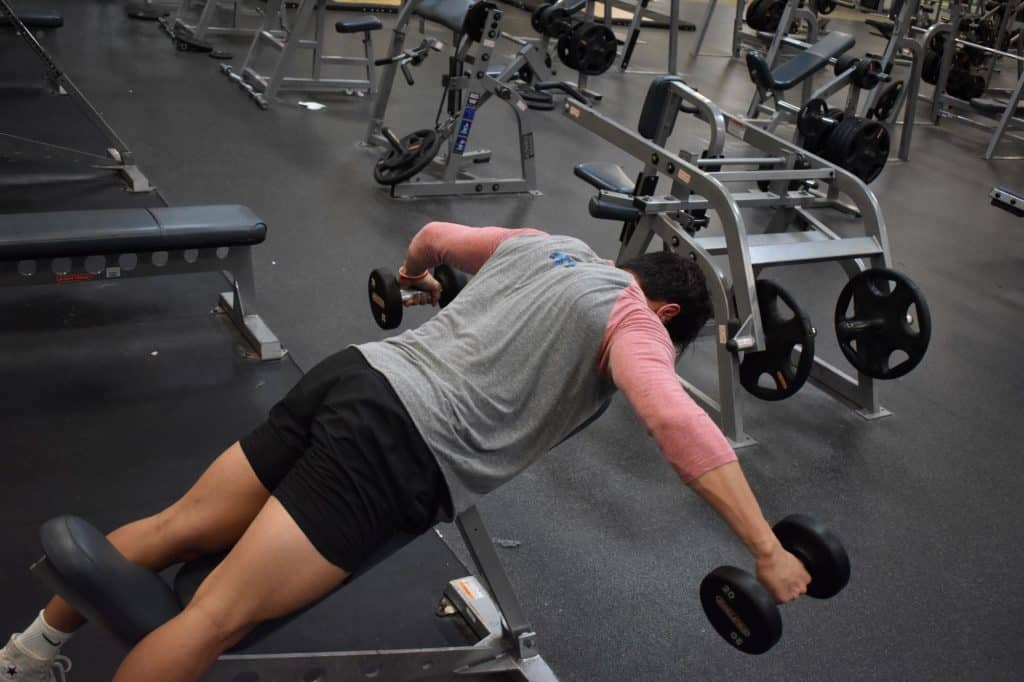
Sets and Reps
So now that you know how to perform the dumbbell rear delt fly in all variations, let’s dive into the logistics of the sets and reps.
Being that this is not a compound movement, it is an isolation exercise, you do not want to go super heavy or low rep. You want solid, controlled reps with a good contraction throughout the movement for the best results. Remember, we are carving out those rear delts to help give you absolute pumpkins for shoulders.
With that being said, it could be best to begin by focusing on 3-4 sets of 8-12 reps. Now, this is something that can be changed as time goes on. As you get more comfortable with the movement, you can increase the rep range or incorporate something like sets until failure. This all depends on your goals, training age, and comfortability with the exercise.
But, if you are just starting out, 3-4 sets of 8-12 reps is more than enough to help bring out your rear delts!
Benefits of the Dumbbell Rear Delt Fly
What does the dumbbell rear delt fly bring to the table? Well for starters, it targets a multitude of muscles. The dumbbell rear delt fly targets:
- Rear Deltoid
- Traps
- Lateral Deltoid
- Rhomboids
It is a simple and effective exercise that can be thrown into shoulder day or back day, and it fits in well with both!
The dumbbell rear delt fly also adds variety to your training. Sometimes you have to adapt to certain situations with your training, a packed gym or limited equipment can force you to do that. Being that the dumbbell rear delt fly is simple and requires so little equipment and space, it is perfect to throw into your regimen. Also, the fact that you can perform it standing, seated, or lying, makes the exercise even more versatile.
The dumbbell rear delt fly can also help:
- Promote proper posture
- Increase shoulder stability
- Prevent shoulder injuries
- Build symmetry with the shoulder (remember there are three parts to the delt)
- Improve overall shoulder function
Common Mistakes of the Dumbbell Rear Delt Fly
There is plenty of room for error with this movement, as there is with any exercise. To maximize your results you want to perform the exercise to the best of your abilities. So, let’s take a look at some things to avoid.
For starters, some people may round their lower back while performing the movement. This is definitely something to avoid. Remember, you want to keep your back straight with a neutral spine throughout the movement.
It is also possible to want to lock your elbows during the movement, or even straighten them. Elbow position is key in this movement, and they should be slightly bent, not too much and not too straight. Straightening or bending the elbows too much can take away from the muscle building benefits.
Another common mistake is utilizing momentum to complete the movement. This can be a result of going to heavy, or well, poor form. You do not want to lift too quickly and bring momentum into the movement. Controlled reps with a good squeeze is what will help bring you boulder shoulders.
Pro Tip: For more on the exercise, check out this video from the late John Meadows on his version of the dumbbell rear delt fly!
Frequently Asked Questions (FAQs)
Now that we have covered the basics involving the dumbbell rear delt fly, let’s take a look at some questions you could possibly have.
Who Should Do the Dumbbell Rear Delt Fly?
There is no specific demographic that this exercise is aimed at. The possible benefits of the dumbbell rear delt fly can be good for anyone! More symmetry, better posture, increased shoulder stability; who would not want that?
Anyone can do the dumbbell rear delt fly!
Is the Dumbbell Rear Delt Fly Better Than Machines or Cables?
This is more of a subjective question. One is not necessarily better than the other, they all hit the same thing essentially. The rear delt fly as a whole has a lot of variety to it. However, if you prefer one over the other, by all means do it. They all are beneficial for blowing up your rear delts.
More on Shoulders
This article may have been on just one exercise for the rear delts, but keep in mind there are three parts to the shoulder. You need to hit all three to truly achieve the shoulders that look like pumpkins. So, check out some of our other articles on great shoulder exercises!
References:
Back muscles: Attachments, Nerve Supply & Action. Anatomy Info. (2019, September 27). Retrieved September 16, 2022, from https://anatomyinfo.com/back-muscles/
Cook, M. (2018, April 28). Shoulder health: An overview of anatomy and injury. On Target Publications. Retrieved September 16, 2022, from https://www.otpbooks.com/shoulder-health/

